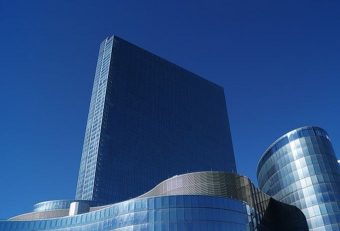
A new report by the US Energy Department’s Pacific Northwest National Laboratory has concluded that widespread use of building controls across the country could cut energy consumption by an average of 29%, or the equivalent electricity used by 12 to 15 million Americans.
US Energy Department’s (DOE) Pacific Northwest National Laboratory (PNNL) investigated 34 different types of energy efficiency measures, most of which rely on building control systems, and looked at how these measures could affect energy use in commercial buildings such as stores, offices, and schools. The researchers from PNNL found that such measures could cut annual commercial building energy use by an average of 29%, and would result in national energy savings of between 4 to 5 quadrillion British Thermal Units (BTUs) — approximately 4% to 5% of the country’s annual energy consumption.
“Most large commercial buildings are already equipped with building automation systems that deploy controls to manage building energy use,” said report co-author and PNNL engineer Srinivas Katipamula. “But those controls often aren’t properly programmed and are allowed to deteriorate over time, creating unnecessarily large power bills.
“Our research found significant nationwide energy savings are possible if all U.S. commercial building owners periodically looked for and corrected operational problems such as air-conditioning systems running too long.”
Commercial buildings across the United States collectively consume about 18 quadrillion BTUs of primary energy every year, and the authors of the report conclude that “inadequate building operations leads to preventable excess energy consumption along with failure to maintain acceptable occupant comfort.” In other words, many buildings likely have the tools and controls to increase energy efficiency significantly, but aren’t making use of it, resulting in excess energy usage. The report specifically focused on heating, ventilation, and air conditioning (HVAC) faults and operation, and therefore major retrofits are not required for the energy savings to be achieved.
Some upgrades are recommended, though, such as enhanced communication capabilities and installation of variable-speed drives on certain fans and pumps in some buildings. Some of the measures that were studied by Katipamula and his team included: Fixing broken sensors that read temperatures and other measurements, Turning off power-using devices like printers and monitors when a room isn’t occupied, Dimming lights in areas with natural lighting.
The authors of the report found that six of the 34 measures they analyzed showed the potential for more than 2% site energy savings. These included: wider deadbands and night setback (7.8%), shortened HVAC schedules (7.1%), demand control ventilation (7.1%, reduced minimum VAV box terminal damper flow settings (6.5%), optimal start (5.9%, supply air temperature reset (2.5%).
Interestingly, while advanced rooftop unit fan controls a high electricity saving, the additional natural gas consumed as a result dropped its savings to only 1.3%.
All commercial buildings across the United States have the potential to reduce energy usage to some degree, but secondary schools were found to be able to see energy savings of around 49%, and standalone retail stores & auto dealerships of 41%.
Source: cleantechnica.com
